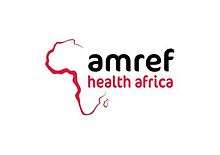Amref Health Africa
Amref Health Africa (formerly the African Medical and Research Foundation – AMREF), was founded in 1957, by three surgeons as the Flying Doctors Service of East Africa. [1]Three doctors – Sir Michael Wood, Sir Archibald McIndoe and Tom Rees – drew up a groundbreaking plan to provide medical assistance to remote regions of East Africa, where they had all worked for many years as reconstructive surgeons. Spurred by what they had seen of the combined effects of poverty, tropical disease and a lack of adequate health services in East Africa, their collective vision was born in the foothills of Mt Kilimanjaro.
History

At that time, there was one doctor to every 30,000 people in East Africa – in Britain it was 1:1,000. Medical facilities were sparse, with rough terrain and often impassable roads making access to medical care difficult for people in rural and remote areas. As this was where the majority of the population lived, Archie, Tom and Michael saw an air-based service as the only way to get health care to remote communities. Amref Health Africa delivered mobile health services and provided mission hospitals with surgical support. A medical radio network was developed to coordinate the service and provide communication.

In the early 1960s, ground-based mobile medical services were added, along with ‘flight clinics’ for the under-served and remote areas in the Kajiado and Narok districts of Kenya.
By 1975, training and education for rural health workers were already a major part of Amref Health Africa's efforts. This included the development of health learning materials. In the late 1970s, Amref Health Africa continued providing mobile clinical and maternal and child health (MCH) services. It also started to focus on community-based health care (CBHC) and training community health workers to deliver primary health care.
During the 1980s, Amref Health Africa moved into community health development, closer collaboration with the ministries of health in the region, and cooperation with international aid agencies. This set the organisation’s course for the 1980s and beyond. Greater emphasis was given to strengthening health systems and staff development, with special attention to health needs identified by communities themselves. Amref Health Africa staff gained experience in the planning and management of health services at a national level – expertise that has since been shared in-house with health ministries (the first was Uganda).
In the early 1990s, Amref Health Africa established a unique year-long training course in community health. The 1990s also saw Amref Health Africa’s work expand to include disease control initiatives, focusing on malaria, HIV/AIDS and TB. During the mid-1990s, Amref Health Africa increased its focus on HIV/AIDS as it looked set to undo much of the progress made in health during the 20th century, and become a major burden to health systems in poor countries. During the same period, in recognition of the need for partnerships at the community level, AMREF engaged more with local groups to enable community-based planning, shared identification of issues and priorities, and efficient use of resources. In March 2018, Amref Health Africa and GE Healthcare became partners for improving primary and referral care on reducing preventable maternal and infant mortality. [2]
See also
- Clinical officers, healthcare providers in Sub-saharan Africa
- Healthcare in Kenya
References
- ↑ Mexican, Roger SnodgrassFor The New. "Santa Fe surgeons help deliver badly needed care in Africa". The Santa Fe New Mexican. Retrieved 2018-05-10.
- ↑ "Amref Health Africa and GE Healthcare Partner to Strengthen Healthcare Systems in Africa - CNBC Africa". CNBC Africa. 2018-03-07. Retrieved 2018-05-10.